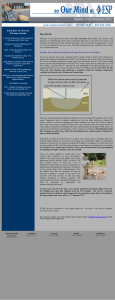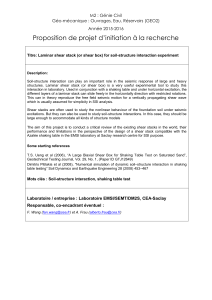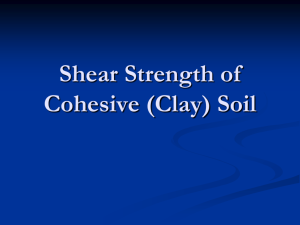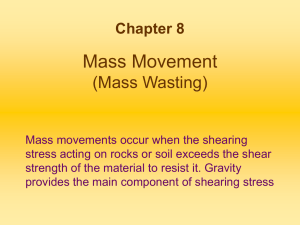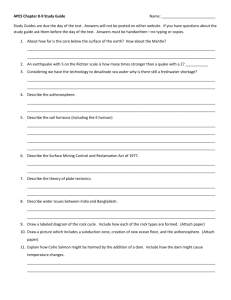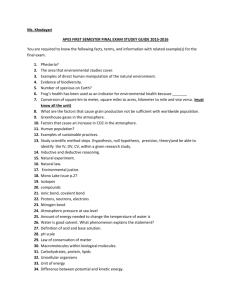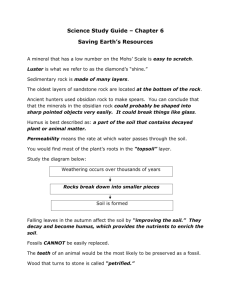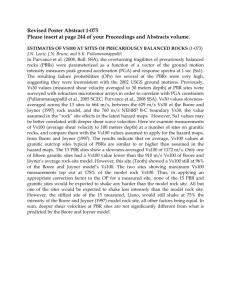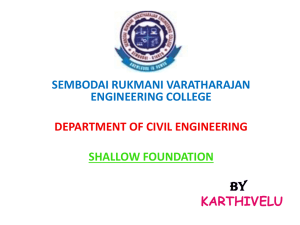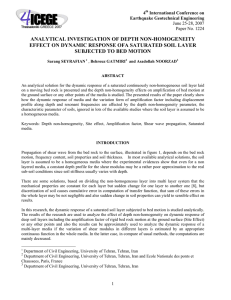File - PHYSICAL GEOLOGY 301
advertisement
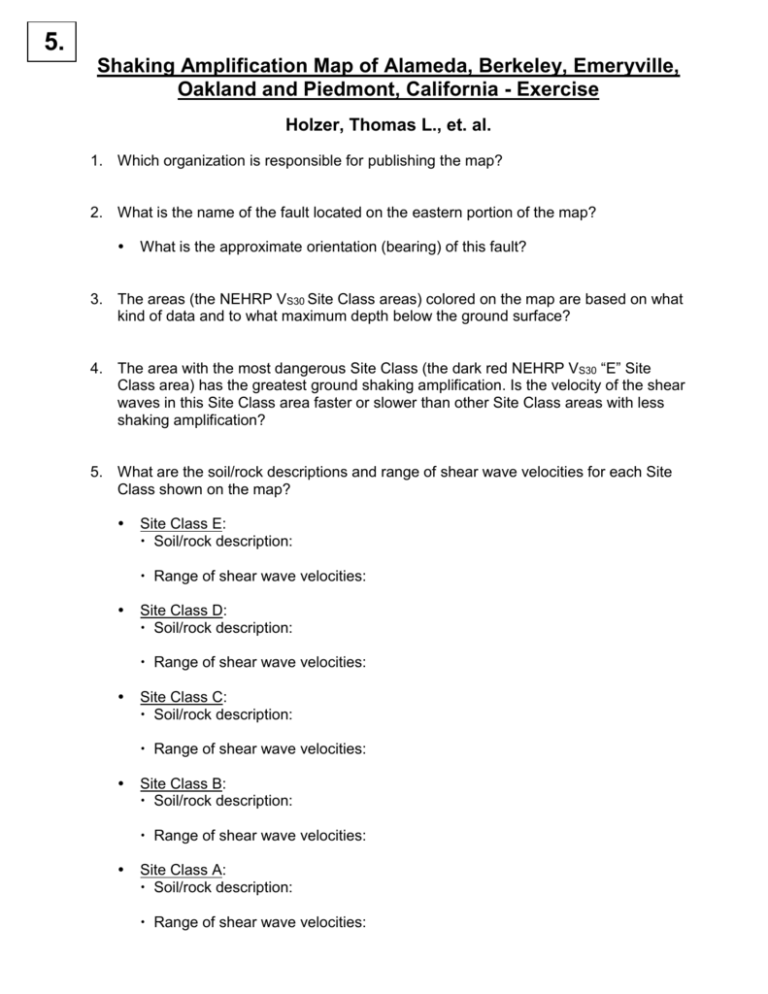
5. Shaking Amplification Map of Alameda, Berkeley, Emeryville, Oakland and Piedmont, California - Exercise Holzer, Thomas L., et. al. 1. Which organization is responsible for publishing the map? 2. What is the name of the fault located on the eastern portion of the map? What is the approximate orientation (bearing) of this fault? 3. The areas (the NEHRP VS30 Site Class areas) colored on the map are based on what kind of data and to what maximum depth below the ground surface? 4. The area with the most dangerous Site Class (the dark red NEHRP VS30 “E” Site Class area) has the greatest ground shaking amplification. Is the velocity of the shear waves in this Site Class area faster or slower than other Site Class areas with less shaking amplification? 5. What are the soil/rock descriptions and range of shear wave velocities for each Site Class shown on the map? Site Class E: Soil/rock description: Range of shear wave velocities: Site Class D: Soil/rock description: Range of shear wave velocities: Site Class C: Soil/rock description: Range of shear wave velocities: Site Class B: Soil/rock description: Range of shear wave velocities: Site Class A: Soil/rock description: Range of shear wave velocities: 5. What correlation do you see between: • Shaking amplification and the velocity of shear waves in soils and rocks? • Shaking amplification and the density / hardness of soils and rocks?
